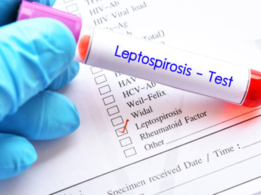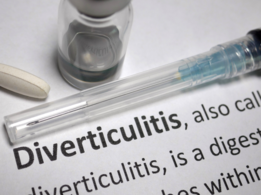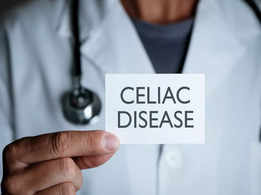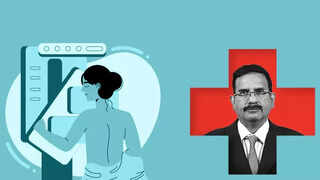01/8Lancet study finds abdominal obesity trend in India

A new study has found the prevalence of abdominal obesity in India which was determined using the National Family Health Survey-5 (2019–2021) data.
Waist circumference was used as a measure for the study.
The study by researchers from IIHMR University, Jaipur, India and Bloomberg School of Public Health, Johns Hopkins University, Baltimore, USA is based on the information collected from 636,699 households, 724,115 women and 101,839 men across all 36 states and union territories in India.
02/8Prevalence of abdominal obesity


The researchers found that the prevalence of abdominal obesity in the country was found to be 40% in women and 12% in men. "The findings show that 5–6 out of 10 women between the ages of 30–49 are abdominally obese," the study found.
It also found that women in older age groups are more likely to be obese. "The association of abdominal obesity in women is stronger with older age groups, urban residents, wealthier sections, and non-vegetarians," they have said.
03/8Obesity in women: Higher trend seen in Kerala, Tamil Nadu, Punjab and Delhi


The study found that More women are found to be obese in Southern states of Kerala (65.4%) and Tamil Nadu (57.9%) and northern states of Punjab (62.5%) and Delhi (59%). It is found to be less prevalent in the states of Jharkhand (23.9%) and Madhya Pradesh (24.9%).
Among religions, the study found that the prevalence of obesity was less in the Buddhist and Jain women and was more in the Sikh and Christian women. "But the difference was not very pronounced in men," it found.
04/8Obesity in India is likely to increase considerably by 2040


The obesity trend has been climbing high in India and in other countries since 1990.
Studies have found that as of 2016, more than 2 billion adults, representing 44% of the global adult population, were overweight or obese.
This Lancet study found that as women age they tend to acquire abdominal obesity much easier than the general obesity.
In the age group of 15-19, 12.7% of the women were abdominally obese while in the 20-29 age group it was 32.2%. The prevalence of central obesity increased to 49.3% and 56.7% in the age group 30-39 and 40-49, respectively.
05/8Abdominal obesity is also known as central obesity


In simple words, obesity means the accumulation of fat in the body. The risks associated with obesity depend on the pattern and distribution of fat in the body.
Abdominal obesity is one of the common types of obesity, which is also known as the central obesity and visceral obesity. Medically it is considered to be one of the serious forms of fat distribution.
"Abdominal or visceral obesity, also known as central obesity, is considered the more serious form of fat distribution, as it predisposes individuals to various metabolic disorders and diseases. Asian Indians are more susceptible to abdominal obesity and accumulation of visceral fat, making them more vulnerable to associated health risks," the researchers have said.
06/8When is a person said to be obese?


The estimation of obesity is done on the basis of waist circumference.
Waist circumference of more than 80 cm in women and 94 cm in men is said to be abdominal obesity.
07/8What are the associated health risks?


Obesity is a potential threat to the individual.
Greater abdominal obesity is linked to cardiovascular diseases, type-2 diabetes, and other metabolic disorders.
Given below are health effects of being overweight:
Hypertension
High blood cholesterol
Type 2 diabetes
Coronary artery disease
Stroke
Gallbladder disease
Osteoarthritis
Sleep apnea
Breathing issue
Clinical depression
Limited physical functioning
08/8How to reduce the risks associated with obesity?


The first step to reduce the risk of obesity is to reduce the weight first and to do this one needs to be physically active and have a good diet.
Stress is a major contributor to overall health. One needs to learn to manage stress. Stress eating hinders weight loss goals. Stress can shut down the appetite, a Havard Health report explains and adds that but if stress persists, it's a different story. "The adrenal glands release another hormone called cortisol, and cortisol increases appetite and may also ramp up motivation in general, including the motivation to eat," it adds.
Start with low impact physical activity like walking, cycling, climbing stairs and swimming. Even gardening is a good option. Cutting down on sedentary activities is the key to improve the active hours. Activities like watching TV, browsing the internet should be reduced.
In diet, always opt for seasonal foods and keep an eye on the calorie intake and calories burned in order to make sure you are not overloading yourself with extra calories. Healthier foods like whole grains, fruits and vegetables, healthy fats and protein sources and limiting intake of refined grains and sweets, potatoes, red meat, processed meat and sugary drinks can prevent obesity.













































































































closecomments
SIGN IN WITH
FacebookGoogleEmail